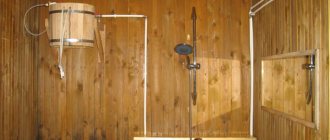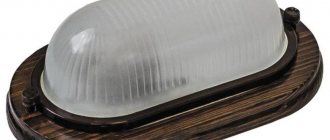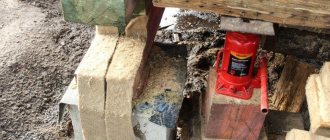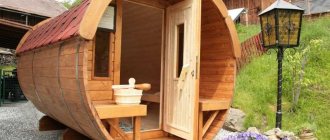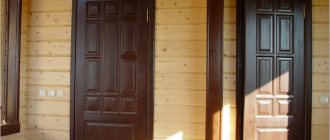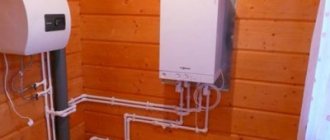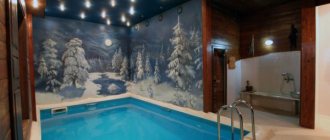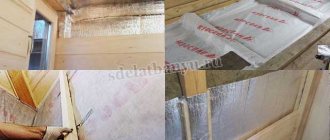The problem of rusty water in the tank of a sauna stove can not only ruin a real holiday, but also lead to a lot of other problems, for example, clogging the hot water supply tap or damaging the shower column. These and other problems become a real headache for bathhouse owners who have installed a metal water tank that corrodes when in contact with water. But this problem can be solved using time-tested methods of protecting metal from corrosion and new technologies to combat it.
How to choose a water tank
The water tank is a special welded structure, which is made from modern materials, equipped with an inlet for cold water and shut-off valves for hot water.
To choose the right tank for your bath, you should decide on the main parameters of the heater:
- type;
- material of manufacture;
- volume;
- installation method.
First, you need to provide for the principle of water intake, choose the appropriate size and installation method of the tank, so that in the future you do not spend an additional amount on re-equipping the equipment. The thickness of the walls of the structure depends on the size of the tank, which can range from 1 to 1.5 mm.
Next, you need to choose a method of heating the water - a stove or a built-in heating element. To decide which container will be more profitable to install, you need to take into account the total number of visitors for whom the bathhouse is designed.
If the bathhouse can accommodate no more than 2 people, then a device with a capacity of 50 liters is sufficient. For large companies, it is preferable to choose a tank with a capacity of 100 liters or more.
The material of manufacture and design features of the device should be taken into account when purchasing.
Making a stove from an iron barrel
To create this unpretentious product, first cut out the bottom and get rid of the top, leaving a cylinder. Then you need to install a grate on the bricks. The inside of the barrel is lined with bricks, which are placed edgewise. The remaining 2/3 of the area is laid with stones. At the final stage, a chimney is made.
For safety, the structure is closed with a lid. Although this is correct, it is not very convenient, because the lid will have to be removed from time to time when more steam is needed.
Types of water tanks for baths
There are three types of water tank - built-in, remote or on a pipe. Moreover, each has positive and negative sides.
Built-in structures
A built-in tank is a classic version of the design, installed on the bottom of a heating stove and combined at the top with the combustion chamber.
This ensures accelerated heating and maintenance of optimal water temperature for a long time.
In this case, the bottom of the tank is in direct contact with an open fire, and liquid is drawn from the tank from above or through a built-in tap.
Remote structures
A remote tank is provided for a furnace equipped with a heat exchanger. Such a device is connected to a heat exchanger using copper pipes, so it can be installed in any room of the bathhouse - washing room or dressing room.
Among the advantages of a remote-type water tank are maintaining a high water heating temperature, reliability and practicality.
The principle of operation of the device is quite simple: cold water enters the heat exchanger, and the heated liquid is supplied back to the tank.
Pipe structures
The design of the tank mounted on a pipe is quite relevant when the bathhouse is used throughout the day.
Such a device provides rapid heating of water to a comfortable temperature thanks to the thermal energy released through the chimney pipe.
The tank on a bath pipe is distinguished by its significant dimensions, high thermal capacity and efficiency. In addition, it is able to prevent carbon monoxide leakage during frequent firing of the sauna stove.
The most common version of the device is a samovar-type tank, equipped with a single or double fitting. These tanks vary in volume, size and design.
Flow type heater
An electric instantaneous water heater for a bath is a device in which water passes through a heated heating element. The heating element is switched on and off automatically when the point of consumption is opened.
Installations of this type have many advantages:
- Full hot water bath (no volume limitation).
- Quick receipt of heated water.
- No maintenance required.
- No need to drain liquid after use.
Flow-through water heaters have another undeniable advantage - small dimensions. Now a few words about the shortcomings.
- To heat a sufficient amount of running water, a large heating element power is required. (from 8 to 27 kW), and this entails problems with wiring.
- In simple (by design) devices, the degree of heating is determined by the power of the heating element and the liquid flow rate.
More complex devices are equipped with automation that is capable of maintaining the required temperature in the hot water system, but this entails a significant increase in cost.
Materials for making tanks
The type of material used to make the sauna tank determines the durability and reliability of the structure, the speed of heating and cooling of the liquid. Water heating devices are made of stainless steel, cast iron and metal.
Stainless steel
The most popular material for the manufacture of tanks for heating water in a bathhouse is stainless steel. It is resistant to corrosion, fire, high humidity, deformation and damage.
In addition, stainless steel products have high thermal conductivity, hygiene and resistance to temperature changes.
The stainless steel tank can be presented in cylindrical and rectangular shape.
Proper care of stainless steel products guarantees efficient operation and a long service life.
Made of cast iron
Cast iron remains the traditional material for making water tanks. It has good performance characteristics - low thermal conductivity, resistance to corrosion, deformation, mold and overheating.
The disadvantages of cast iron products include their impressive weight and complexity of installation.
In cast iron tanks, water heats up slowly, but also cools down over a long period of time. Therefore, one volume is enough to satisfy hot water needs for the whole day.
Made of metal
The cheapest option is metal tanks, which are susceptible to corrosion, rotting and deformation. Such characteristics can negatively affect the quality of water and the durability of the product.
It is strictly forbidden to paint metal devices with moisture-resistant paint, which can release toxic substances when heated.
Less popular are enameled tanks, which are sensitive to mechanical damage. If there are chips in the enamel, such devices are not recommended. To protect the heaters from possible corrosion, their surface is treated with a special heat-resistant compound.
Stainless steel tanks of the remote type are considered the most practical and reliable. Such designs are distinguished by their attractive appearance and safe operation.
Preparation and painting of the product
Before painting the inside of the barrel, its surface must be properly prepared. This rule especially applies to old containers that have already been in use. The tank or barrel must be cleaned using abrasive equipment.
The surface must be degreased to ensure adhesion of the metal to the soil or enamel. Used containers always contain residual dirt and corrosion. If there is rust in the barrel, it must be removed using a metal brush or an electric drill with an attachment. Next, treat the inside of the barrel with a rust converter, which will help stop the corrosion process.
If anti-corrosion work is performed incorrectly, the adhesion of paint materials to the metal surface will not occur. You can paint the inside of containers provided that you have provided adequate ventilation.
To prevent water from penetrating into the pores contained in the paint, painting should be done in two or even three layers. The container ready for painting must be completely dry. Priming is also carried out in two layers. For protection, you must have rubber gloves, goggles and a respirator. Each successive layer is applied only when the previous one is completely dry.
As a painting tool, you can use a brush or a compressor sprayer.
You only need to paint on a flat surface. If the container contains non-potable water, then you can use the simplest method of corrosion protection.
Painting the inside of a metal container should be done at an air temperature of -15 to +40 degrees.
On video: how to protect a barrel from rust.
Selecting the optimal tank volume
An equally important task is to determine the appropriate tank volume. The calculation of this parameter should be carried out taking into account the rate of water consumption per adult for bathing procedures, which ranges from 18 to 26 liters of water.
For a family of 2 people, it is enough to purchase a 50-liter tank, for a holiday with a group of 4 to 6 people - a 100-liter tank.
Factory models of water heating devices are presented in a wide range of volumes - from 20 to 200 liters. Electric boilers also have different volumes - from 30 to 100 liters.
For baths and saunas: are there any differences?
Let’s answer right away briefly and clearly: there are no differences . The fact is that the difference between these two types of national baths is only in the temperature conditions of the steam room, and the steam room is the place where the use of paint and varnish products is least desirable, because it somehow shares its chemical composition with the environment when heated.
Paint for baths and saunas Supi Arctic
Below we will consider the issue of paints for the steam room separately - after all, there are compositions that can be used in the steam room, but now we can say that they are equally used in baths and saunas. So there are no differences here either.
Methods for installing a water tank
Having decided on the type and material of manufacture, you can consider the available methods of installing devices that provide fast and efficient heating of water.
You can install a hot water tank with your own hands in the firebox, above the heater and next to the stove.
Installation in the combustion chamber
The method involves the use of a sauna stove with a large combustion chamber for internal installation of a water tank.
The following requirements are imposed on the device for heating water: minimum wall thickness - 0.8 mm, resistance to temperature changes and deformation.
The structure is heated over an open fire, so it can capture its base and end elements. This method is often recommended for installing stainless steel tanks.
Installation above the heater
An equally popular option, which involves installing a heater above the compartment for heating bath stones and generating steam.
If a cast iron device is used, it must be suspended from the ceiling structure using a metal cable and hooks. The best option is a lightweight stainless steel tank.
It is economical to install a water heater above the stove around the chimney pipe, which can provide accelerated heating of water from the stones and pipe.
Installation near the stove
This method involves installing the tank near heating equipment. As a rule, it is used in saunas with high air temperatures and low humidity.
In this case, the hot water tank is mounted at a distance of at least 250 cm from the direct heat source, and the water is heated using a double-circuit heat exchanger with cold water supply and hot water output.
Cold water is supplied to the heat exchanger and heated, then discharged into the heater, after which the heating cycle is repeated.
Indirect heating boiler in the bath
When it is not possible to install the tank directly next to the stove, the boiler is placed in a convenient location, and the device heats the contents indirectly.
Structurally, the water distribution is done so that part of the pipes passes through the furnace. Cold liquid from the reservoir passes through pipes, is supplied to the coil inside the furnace, is heated there and flows back into the container from above. The physical law of displacement of hot liquid by cold is also used here.
As a rule, the capacitive volume of the structure is 60-80 liters, the contents warm up in 1.6-2.2 hours. Advantages of this scheme:
- Separate placement from the stove;
- Can be used for a sauna;
- Ease of operation;
- Minimum resource costs.
The complicated design is a disadvantage that is compensated by ease of placement and functionality.
What is the difference between paint and varnish materials for interior and exterior decoration?
The difference can be considered according to two criteria: environment and person.
The materials must differ, because the conditions inside and outside the building are different, and the external environment outside is always more aggressive - there are greater temperature changes, and exposure to precipitation - the same moisture, but with its own specifics, and much higher doses of ultraviolet radiation, which (without additional protection) discolor some pigments.
On the other hand, air exchange outside is not limited in any way, which reduces the concentration of substances harmful or unpleasant to humans. Paint and varnish products have always differed from other finishing materials precisely in their toxicity and unpleasant odor. The same paint applied inside and outside would have a completely different effect on a person.
IMPORTANT! Dyes based on organic solvents can release volatile compounds even after drying, so their toxicity period is longer than the hardening of the surface layer.
In general, manufacturers of facade paints strive to make them as effective as possible in terms of resistance to the environment , but at the same time partially sacrifice their safety for humans and the environment. However, this statement was true mainly for compositions that we today call obsolete - based on organic solvents . Therefore, over time, the main difference between facade and interior paints becomes the conditions for which they are designed .
Interior paints in particular can be tolerant of washing with detergents , and may also contain additives that increase their resistance to abrasion.
However, you can find a detailed analysis of the types and characteristics of various varnishes and paints that are applicable in the interior and exterior in the materials we have already published.
